matty beniers
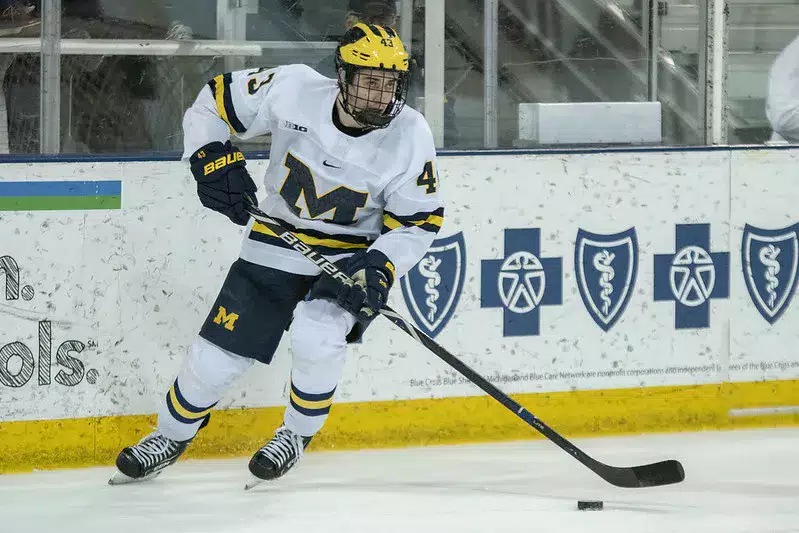
It's been a couple years since I last wrote a "Wolverines in the NHL" update. David and I have done a segment during the season on the HockeyCast devoted to it the last couple years, but a written piece can have a wider reach and can also be more expansive. Also, since the NHL regular season recently ended, I figured this was a proper time to do it, rather than in the middle of the season like our podcast segment. With the recent explosion of Michigan players heading to professional hockey, this year's update is longer than ever, so it's being broken into two pieces. Today is Part 1, where we'll cover the established NHLers, the studs, complementary players, and role players. Tomorrow will be updates on the younger NHLers, recent retirees, and all the alumni who have fallen short of the NHL but are still playing pro hockey somewhere in the world:
The Studs
These are the players who are considered high end, All-Star caliber. They are one of the three or so best players on their given teams and are getting paid premium money in the NHL:
Quinn Hughes, D, Vancouver Canucks: Already the best defenseman from the University of Michigan to ever play in the NHL, Hughes is likely to set a new milestone (when the awards are announced in June), becoming the first Michigan alumni to ever win the Norris Trophy for the NHL's best defenseman. Michigan State (Duncan Keith), Harvard (Adam Fox), UMass (Cale Makar), Bowling Green (Rob Blake), Boston College (Brian Leetch), and Wisconsin (Chris Chelios) have all produced a Norris winner... it's about time that Michigan got one. Hughes is likely to do it, the capstone of a marvelous season that saw him score 17 goals and 75 assists for 92 points, leading the NHL in the latter two categories for defensemen (he was tied for 6th with 17 goals by a D).
Hughes became one of 12 defensemen in NHL history to ever score 90+ points in a season, which is what will likely cement his Norris case. Hughes is the engine for everything that the resurgent Vancouver Canucks do, helping the team win their division for the first time in nearly a decade. He's a dynamic offensive force and a puck possession monster who drives play over all 200 feet, which allowed the Canucks to outscore opponents 92-55 with Hughes on ice at 5v5 this regular season(!!). A brilliant passer who has evolved significantly as a shooter and defender during his NHL career, Hughes is a no doubt top five defenseman in the NHL during his age 24 season.
Dylan Larkin, C, Detroit Red Wings: Few players in the NHL may be as linked to their team's wins and losses as Dylan Larkin is to the Red Wings. Anyone who followed Detroit's season knows that, a team that seemed to be headed to the postseason before an injury to Larkin in March submarined their season. The team looked almost unrecognizable without Larkin and it's not surprising why that's the case. The Red Wings captain potted 33 goals this season, the best goals-per-game mark of his career (coming in just 68 games). He also finished above 1.00 points-per-game this season for the first time in his career, probably reaching his apex at 27 and that's fine. Larkin's a very good NHL player, an important leader off the ice and a speedy playdriver with good offensive talent on the ice, playing a premium position with legit finishing talent. Though perhaps not a superstar of the Quinn Hughes variety, there are no teams in the NHL that would turn down the opportunity to put Larkin on their roster.

[Bill Rapai]
Zach Hyman, LW, Edmonton Oilers: I listed Hyman as a complementary piece the last time I did this article, which is still probably true in the abstract (in the sense that he complements his team's superstars), but when you score 54 goals, you have to go in the stud category. That's what Hyman did this season, blowing by his career high goal total by a full 18 goals en route to a staggering total that ranked 3rd in the NHL The three seasons since Hyman signed in Edmonton has seen his goal total increase in linear fashion, from 27 to 36 to 54, this season being the apex of the 31-year-old's career. Hyman is simply the perfect fit to play alongside the NHL's best offensive player, Connor McDavid. He posts up around the net and gets fed the puck, shots in tight, tips, deflections. Very few of Hyman's 54 goals have come outside of ~5 feet from the crease, with 15 of his goals coming on Edmonton's devastating power play. It may be true that Hyman wouldn't score that many goals on a team sans McDavid and Leon Draisaitl, but the skill and hockey talent of Hyman is now undeniable. He's a really good NHL forward.
Kyle Connor, LW, Winnipeg Jets: Two years ago when I wrote this piece Connor was coming off of a season akin to what Hyman has done this season, scoring 47 goals for the Winnipeg Jets. His two seasons in the meantime have fallen short of that mark but Connor remains a high level NHL goalscorer. Connor has now played seven real NHL seasons and has scored 30 goals or at a 30+ goal pace (in the case of the 56 game COVID shortened season) in all seven of them. He remains a pretty nonexistent defensive player, instead a one-dimensional rush scorer but when you average ~38 goals per 82 games over a seven season period, it doesn't much matter what else you do. You're a legit stud.
Zach Werenski, D, Columbus Blue Jackets: Not a ton has changed for Werenski since the last time we updated this article. He remains a very good offensive defenseman, scoring 57 points this season (ranking 12th in the NHL by a defender) in 70 games. This was the most games that Werenski has played in a season since 2018-19, as injuries continue to minorly hamper him, but his play remains pretty consistent. Werenski plays on a bad team, puts up a good number of points, generally wins his minutes, and collects a huge paycheck (still earning $9.5 M annually, near the top in the league). Werenski's not an elite defenseman, but he's a good top pairing puck mover.
[AFTER THE JUMP: more players]
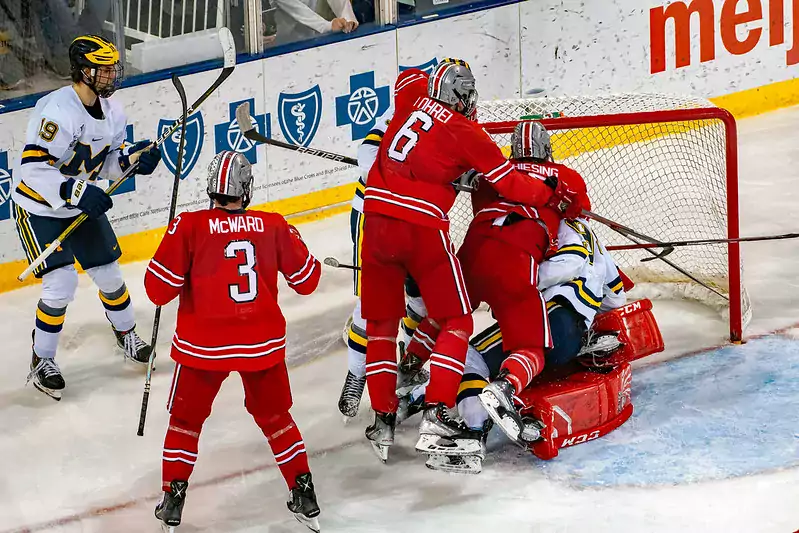
After a month off for the Christmas/WJC break, Michigan Hockey was back in action this past weekend against the Ohio State Buckeyes at Yost Ice Arena. It was an eventful series, with Michigan suffering a disastrous defeat on Friday night before rebounding to take the Saturday game 4-2. The split wasn't quite what Michigan wanted but it was acceptable considering the rustiness after such a break. Today we'll be talking about the OSU series, looking at the B1G and NCAA picture, and quickly checking in on the WJC results, NHL Draft notes, and Wolverines in the pros.
Ohio State's Full-Court Press
The story of this past weekend's tussle with Ohio State was what the Buckeyes did tactically to give Michigan fits. Steve Rohlik dialed up a hyper-aggressive offensive zone forecheck, one that sent F1 (the first forechecker) deep into the zone, always below the goal line, to apply immediate puck pressure on whichever Wolverine was recovering the loose puck. The other two forwards F2 and F3, were providing aggressive support, either on-puck, or pinching on the walls to take away the first outlet passes. If a Michigan player tried to skate with the puck out of the zone, F1 would stay glued onto him and another forward would arrive quickly to hound the puck. Any chips of the wall were met with a hard pinch at the point by the defensemen as well.
Here's what it looked like in action:
🚨 Cam Thiesing opened the scoring just 18 seconds into the game with his team-best 11th goal of the season.#GoBucks pic.twitter.com/nw1BmAHfQZ
— Ohio State Men's Hockey (@OhioStateMHKY) January 14, 2023
Luke Hughes gets the puck in front of his own net, tries to skate it out of the zone, and is met with immediate puck pressure. F1 separates him from the puck and F2 is right there to scoop up the loose puck and keep the possession going. It resulted in a goal on that play, but many times it didn't- it merely kept Michigan hemmed in their zone for minutes at a time. Ohio State paired this aggressive strategy on dump-ins and retrievals with a shoot from everywhere approach to offense. They flung pucks at the net from all over, knowing that Erik Portillo's struggles to control rebounds this season would end with those pucks ricocheting to the boards, where their retrieval approach could recover them quickly.
[AFTER THE JUMP: analysis and all-stars]
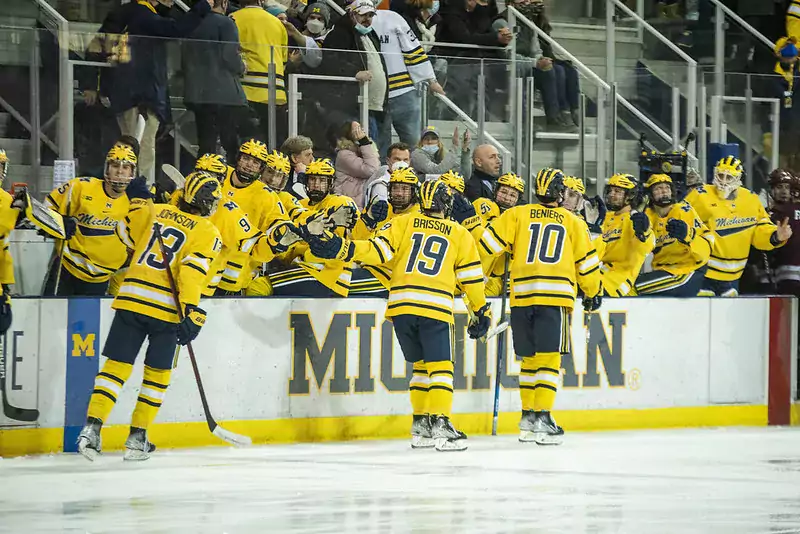
Typically we do a formal exit post when someone big from basketball or football leaves the team, and sometimes that is the case for hockey. We did not do one last week even though there was a spate of exits precisely for that reason: so many big name players were exiting for NHL/AHL deals that doing one post for each would have left you all drowning in exit posts. Instead, it felt better to do one big piece that gives a short farewell to each player that is heading to pro hockey, with a bonus take on how they will do at the next level. So here goes the Hockey Exit Bonanza.
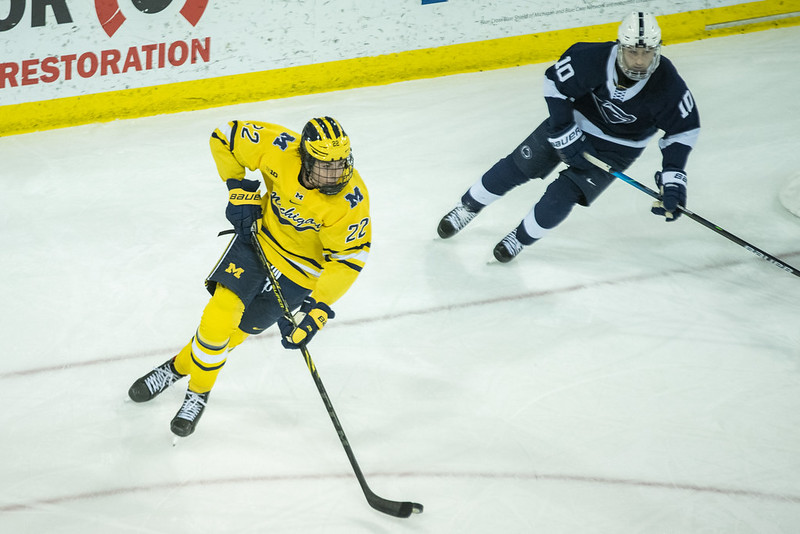
[James Coller]
Exit: Owen Power
First up is Michigan's towering defenseman, the #1 pick in the 2021 NHL Entry Draft. Power was signed by the Buffalo Sabres shortly after Michigan's season concluded and he made his NHL debut last weekend in Toronto against the Leafs. Power played two seasons at Michigan, scoring 32 points in 33 games this past season to earn All-America honors. Power's 6'6" height was his defining characteristic, but his ability to skate well and comfortability cycle down into the corners of the offensive zone made him a rare find. Given the typical dimensions of hockey players, it is quite possible Michigan will not have another player with Power's exact traits for several decades. Power played top minutes this season, often paired with either Nick Blankenburg or Keaton Pehrson, and also played heavily on the power play.
His NHL potential: Power is someone I've generally been a bit lower on than some of the scouts, because I didn't feel like he was Michigan's best defenseman (I would say Luke Hughes for that) this season. I also was frustrated by Power's unwillingness to use his size while defending, but I will admit that the NCAA is a much softer game than the NHL. That said, the toolkit is absolutely there, and the Sabres will have plenty of opportunity to mold Power how they want him. Power was 17 when he enrolled at Michigan, meaning he's only 19 now, and defensemen take longer to develop in the league than forwards. Guys who are 6'6" and can skate don't come around every day. If he learns to be a bit more aggressive in his own end and plays the point well offensively, it's not inconceivable he could be Dougie Hamilton in three or four years. Even if he doesn't, Power will have a lengthy NHL career because Big Body Canadian Boys who play defense always do.
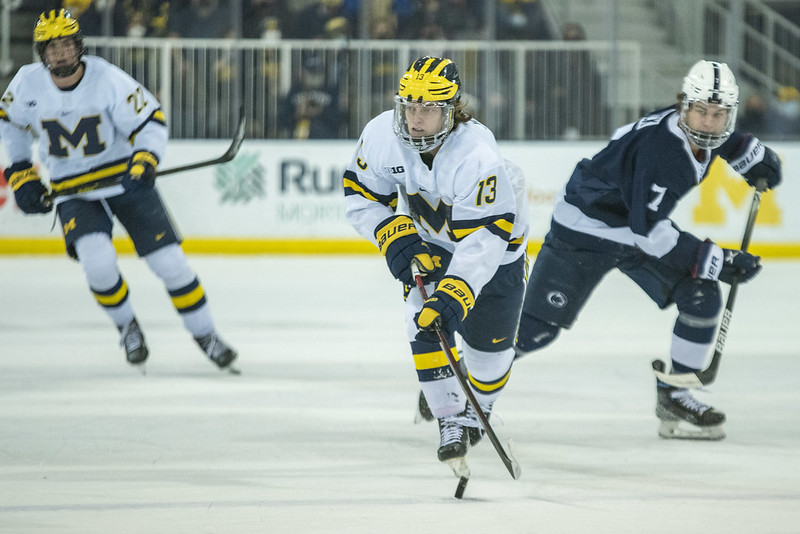
[James Coller]
Exit: Kent Johnson
The other name who signed quickly after Michigan's season ended was Kent Johnson, inking an entry level contract with the Columbus Blue Jackets, who drafted him 5th overall last summer. Johnson played two seasons at Michigan, like Power, and was one of Michigan's highest scorers both seasons. Johnson never scored in double figures for goals, but racked up assists to boost his lofty point totals, scoring 37 this season in only 32 games. Like Power, Johnson played with Team Canada at the WJC and at the Olympics, meaning that he missed about a quarter of the season. Johnson spent most of his Michigan career on a line with Matty Beniers, playing the wing almost wire-to-wire, with one series against Minnesota in December 2020 being the exception.
His NHL potential: Johnson is the player of this group that I'm most fascinated by when it comes to his NHL future. Johnson is a player with a clear set of skills, and also a clear set of weaknesses. Johnson has very good hands and the ability to make dangles/dekes that few other players can, even at the NHL level. His shot is also not bad at all. On the other hand, the aforementioned skill does not achieve as much as it should. He makes a lot of neat plays but they don't often lead to much of anything, and he had a tendency to rack up secondary assists that pad his point totals, which empirically are mostly random and not indicative of a player's success, generally speaking. Moreover, Johnson remains extremely skinny and does not engage physically in the corners. Finally, Johnson plays at a very slow pace, always preferring to slow the game down when the puck is on his stick rather than keep moving.
The concern with this approach to the game is pretty obvious when we're talking about the NHL: it is the fastest and biggest league in the world. Players in the NHL are far bigger, stronger, and more physical than the NCAA and if Johnson didn't want to play the physical side in college, what does that mean for the NHL? Additionally, NHLers take away time and space, and the hallmark of a great NHLer is one who can think and execute high-level plays on the fly. Johnson didn't show that much at Michigan. He's not going to get the same amount of time to stop and contemplate the play in the NHL.
Players who play a more meandering pace in the NHL tend to be big, burly players who give themselves that extra time because they can shield the puck from opponents with their body. These are folks like Ryan Getzlaf or Evgeni Malkin. Johnson is not that size and will never be. He's going to need to either figure out how to speed himself up, or completely change his approach. Drafting him in the top five was a major swing by Columbus and KJ will get his chance to make it work, but I have my concerns.
[AFTER THE JUMP: More guys]
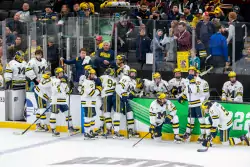
farewell to an uber-talented team that came up a bit short

Two wins to a title

raise that chalice!

Sweet victory (but we're not there yet)
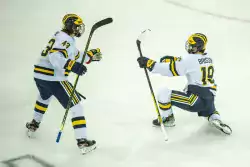
Finally...
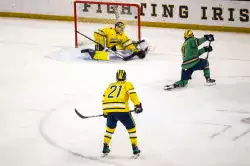
A very good team enters the postseason with nothing much accomplished yet

We could have used the Wisconsin Bad photo. This time it's more Michigan Good.

You know when you play well and lose, but then play worse and win? Yeah, it's kinda like that.
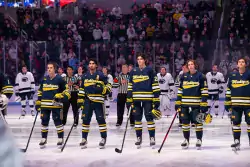
Michigan sends four active hockey players to the Beijing games (and two alumni!)
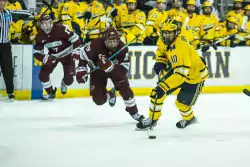
Olympics in the picture, the WJC down in flames, a cancelation kerfuffle, and a bulldozing of UMass. Lots going on!
29